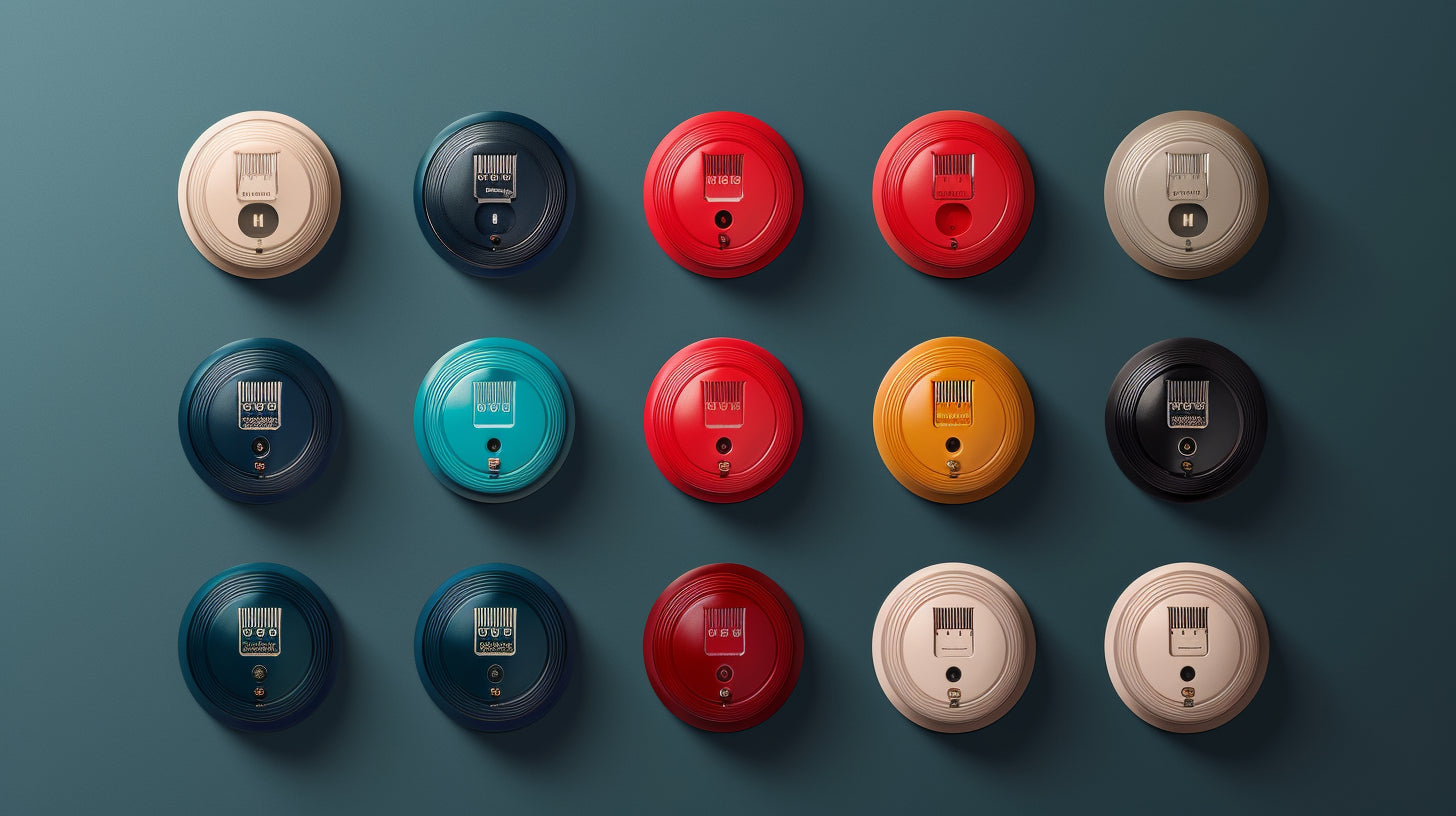The Sound of Safety: Exploring the Science Behind 130dB Siren Alarms
In a world where safety is paramount, having effective alarm systems is crucial. One such type of alarm that has gained significant attention is the 130dB siren alarm. With its high-volume capabilities, this alarm is not only capable of catching people's attention but also ensuring their safety. In this article, we will delve into the science behind 130dB siren alarms, their importance in safety, how they work, their impact on hearing health, regulations and standards surrounding them, innovations in siren alarm technology, and how to choose the right siren alarm for your needs.
Introduction
When it comes to personal or public safety, it is essential to have reliable methods to alert people of potential dangers or emergencies. One of the most effective ways to achieve this is through the use of loud sirens. These alarms emit high-decibel sound waves that can instantly grab anyone's attention and prompt them to take immediate safety measures.
In recent years, there has been a growing demand for high-volume siren alarms, with the 130dB siren alarm being one of the most popular choices. This alarm operates at an incredibly high decibel level, ensuring that it cuts through the noise and reaches a wide range of individuals within its vicinity.
The purpose of this article is to explore the science behind 130dB siren alarms and shed light on their importance in safety. We will also discuss how these alarms work, the selective frequency range they operate on, and their impact on hearing health. Additionally, we'll touch upon the regulations and standards that govern the use of these alarms and the technological advancements that have been made in this area.
If you're considering investing in a siren alarm system or simply want to understand more about this powerful safety device, read on to learn everything you need to know about 130dB siren alarms.
Understanding Sound Decibels
What is a Decibel?
A decibel is a unit of measurement used to quantify the intensity or loudness of sound. The decibel scale is logarithmic, meaning that each increase of 10 decibels represents a tenfold increase in sound intensity. In simpler terms, a sound at 20 decibels is twice as loud as a sound at 10 decibels, and a sound at 30 decibels is ten times louder than a sound at 20 decibels.
Comparing Sound Decibels
Let's look at a few examples to understand sound decibels:
- Normal conversation: Approximately 60-70 decibels. This is the level of sound you would expect during a typical conversation between two people.
- City traffic: Around 85 decibels. The noise of cars, buses, and trucks on a busy city street can reach this level of intensity.
- Rock concert: A typical rock concert can exceed 100 decibels, depending on the venue and sound system. This level of sound can be damaging to your ears if exposed for an extended period.
- Jet engine: A jet engine during takeoff or landing can produce noise levels of up to 140 decibels. Immediate hearing damage can occur without proper hearing protection.
By comparing these examples, it is evident how sound decibels can vary significantly and why understanding their impact is crucial for safety, such as with siren alarms.
Siren alarms, like those with 130 decibels, produce sound at an intensity considered extremely loud. These alarms are designed to capture attention even in chaotic situations.
The next section will discuss the importance of loud alarms in safety and their role in emergency situations.
Importance of Loud Alarms in Safety
When it comes to safety, loud alarms are crucial for quickly and effectively alerting individuals to potential dangers or emergencies. In this section, we will explore the importance of loud alarms in safety and how they play a vital role in ensuring the well-being of individuals and their property.
Alerting in Emergency SituationsLoud alarms are essential in emergency situations as they provide immediate notifications to occupants and nearby individuals. Whether it's a fire alarm, a burglar alarm, or a severe weather warning, a loud alarm can cut through chaos and grab people's attention amidst the confusion and panic that often accompanies emergencies.
In a fire emergency, a loud alarm helps occupants evacuate the building quickly, potentially saving lives. Similarly, a loud alarm during a home intrusion or break-in can startle intruders, alert neighbors, and give homeowners time to take necessary actions or contact authorities.
Deterrence and Intruder PreventionLoud alarms act as powerful deterrents against potential intruders or criminals. Criminals prefer targeting properties where they believe they can operate undetected. A loud alarm system makes it riskier for them to proceed with their malicious intentions.
By installing a loud alarm, homeowners and businesses send a strong message that their property is protected, closely monitored, and ready to sound an alert at the slightest sign of unauthorized entry. This deters break-ins and criminal activities, providing peace of mind and ensuring the safety of belongings.
Moreover, loud alarms not only deter intruders but also draw attention from passersby and neighbors who can potentially intervene or contact the authorities. This collective effort creates a sense of community vigilance and enhances overall safety.
In conclusion, loud alarms play a vital role in safety by alerting individuals to emergencies and deterring potential intruders. They provide immediate notifications, enabling swift actions and helping to mitigate risks. Furthermore, their deterrent effect helps prevent crime and fosters community safety. When choosing a safety alarm system, prioritize the loudness and effectiveness of the alarm to ensure maximum protection.
Overall, investing in powerful and strategically placed loud alarms significantly enhances safety measures and provides peace of mind in various scenarios.
How 130dB Siren Alarms Work
Siren alarms are essential for safety systems as they alert people to potential dangers or emergency situations. One type of siren alarm that has gained popularity is the 130dB siren alarm, known for its powerful sound output. In this section, we will explore how these alarms work and why they are so effective.
Components of a Siren Alarm
A 130dB siren alarm consists of several key components that work together to produce the loud and attention-grabbing sound. These components include:
- Speaker: The speaker generates the sound and is designed to produce a high-intensity sound output loud enough to capture attention even in noisy environments.
- Amplifier: The amplifier increases the power of the sound signal received from the control unit, ensuring a high sound output without distortion.
- Control Unit: The control unit receives signals from sensors or triggers and activates the alarm when necessary. It may also have adjustable volume control or multiple sound patterns.
- Power Supply: Siren alarms require a reliable power source, either batteries or a direct connection to an electrical power source, to operate effectively.
Sound Amplification and Projection
To achieve the high sound output of 130dB, siren alarms use advanced sound amplification and projection techniques.
- Horn Design: The design of the speaker or horn helps focus and direct the sound waves in a specific direction, increasing the effective range of the alarm. The shape and size of the horn maximize sound dispersion and coverage.
- Sound Compression: The control unit processes the sound signal and increases its amplitude, resulting in a louder sound output. This helps the sound cut through ambient noise levels and reach the intended audience.
- Sound Waves and Frequencies: Siren alarms emit sound waves at specific frequencies that effectively capture human attention. The frequencies used in 130dB siren alarms are carefully selected to ensure the alarm is attention-grabbing and distinguishable from other sounds in the environment.
By combining these components, sound amplification techniques, and careful frequency selection, 130dB siren alarms produce an extremely loud and attention-demanding sound. Whether used in home security systems, public safety applications, or industrial settings, the high sound output of these alarms quickly alerts people to potential dangers or emergencies.
In the next section, we will delve into the selective frequency range used by siren alarms to optimize their effectiveness and consider the well-being of wildlife and pets.
Selective Frequency Range for Effectiveness
When designing safety alarms, the selective frequency range is crucial. It ensures that the alarm targets the human auditory response while minimizing the impact on wildlife and pets. This is essential for the alarm to be effective in emergency situations.
Different sound frequencies have different effects on the human ear. By targeting specific frequencies within the audible range, siren alarms can effectively capture our attention and alert us to potential dangers. The human ear is most sensitive to sounds in the frequency range of 2,000 to 5,000 Hertz (Hz). Alarms designed to operate within this range are more likely to grab our attention and prompt a quick response in emergencies.
Research has shown that high-pitched sounds are more attention-grabbing than low-pitched sounds. Our brains are wired to pay more attention to sharp, sudden, and high-frequency noises, which are often associated with threats or dangers. By using high-pitched frequencies within the selective frequency range, siren alarms can effectively command our attention.
However, it is also important to consider the well-being of wildlife and pets. Loud sirens can cause distress, anxiety, and physical harm to animals. To address this concern, manufacturers are developing technology that allows for the selective emission of frequencies that are less likely to affect animals negatively. By carefully choosing frequency ranges that have minimal impact on wildlife and pets, sirens can strike a balance between alerting humans and minimizing harm to other living beings.
Even with selective frequency range technology, some animals may still be affected by loud alarms. In these cases, it is recommended to install sirens in locations that minimize the impact on wildlife, such as positioning them away from natural habitats and using directional sound projection to target specific areas.
In conclusion, the selective frequency range of sirens is critical for their effectiveness. By targeting frequencies within the human auditory response range and considering the well-being of wildlife and pets, these alarms can successfully alert humans to potential dangers while minimizing harm to other living beings. It is important to consider the specific needs of your location and the potential impact on both humans and animals when choosing a siren alarm.
Impact on Hearing Health
Exposure to loud sounds can have a significant impact on our hearing health. When it comes to 130dB siren alarms, it is crucial to understand the potential risks and take necessary precautions to protect our hearing.
Potential Risks and Precautions:
- Hearing Loss: Prolonged exposure to sounds above 85 decibels can cause hearing loss over time. 130dB alarms exceed this threshold, so prolonged exposure to these loud sounds can be harmful to our hearing.
- Tinnitus: Exposure to loud sounds can trigger or worsen tinnitus, the perception of ringing or buzzing in the ears. This can be uncomfortable and impact our overall well-being.
- Hyperacusis: Hyperacusis is a condition where everyday sounds become unbearable or painful. Exposure to extremely loud alarms can contribute to the development or worsening of hyperacusis.
To mitigate the impact on hearing health, here are some important precautions to take when using 130dB siren alarms:
- Limited Exposure: Limit the use of loud alarms to emergency situations or when necessary.
- Distance: Stand at a safe distance from the alarm to reduce the intensity of sound reaching your ears.
- Use Protective Equipment: Consider using earplugs or earmuffs to reduce the sound intensity.
- Volume Control: If possible, adjust the volume of the alarm to a comfortable and safe level for your hearing.
- Avoid Direct Exposure: Position yourself at an angle or behind a barrier to reduce direct sound impact.
- Regular Hearing Check-ups: Undergo regular hearing check-ups with an audiologist, especially if you are frequently exposed to loud sounds.
By following these precautions, you can minimize the potential risks to your hearing health when using 130dB siren alarms. It's important to prioritize your hearing health and take proactive steps to protect it for a better quality of life.
Individuals with existing hearing conditions or vulnerabilities should consult with a healthcare professional or audiologist before exposure to 130dB siren alarms. They can provide personalized guidance and recommendations based on individual hearing needs and concerns.
Regulations and Standards
Regulations and standards play a crucial role in ensuring the safety and well-being of individuals and communities when it comes to siren alarms. These guidelines ensure that siren alarm systems are of high quality, functional, and effective. In this section, we will explore the key regulations and industry standards that govern the design and use of 130dB siren alarms.
Government and Industry Standards
Various regulatory bodies and industry organizations have established standards for siren alarms to ensure compliance with safety guidelines. These standards cover aspects such as sound output, quality, durability, and environmental impact. Let's take a look at some of the most significant regulations and standards that manufacturers adhere to:
- Occupational Safety and Health Administration (OSHA): OSHA sets permissible exposure limits (PELs) for noise levels in the workplace. Siren alarms used in industrial settings must comply with these standards to protect the hearing health of workers.
- National Fire Protection Association (NFPA): NFPA develops standards like NFPA 72 - National Fire Alarm and Signaling Code, which covers the installation, testing, and maintenance of fire alarm systems, including siren alarms. Compliance with NFPA standards ensures the effectiveness of fire alarm systems.
- European Conformity (CE) Marking: The CE marking indicates conformity with health, safety, and environmental protection standards for products sold within the European Economic Area (EEA). Siren alarms must meet specific criteria to obtain the CE marking, ensuring compliance with European regulations.
- Federal Communications Commission (FCC): FCC regulates communication devices and manages the radio spectrum. Siren alarms with wireless connectivity, like those integrated with home security systems, must comply with FCC regulations to ensure proper functioning and minimal interference with other devices.
Certifications for Loud Alarms
In addition to regulations and standards, siren alarms may undergo third-party certification processes to validate their quality and compliance. These certifications provide consumers with assurance that the product meets certain efficacy and safety standards. Some notable certifications for loud alarms include:
- Underwriters Laboratories (UL): UL is a globally recognized safety certification organization. UL certification ensures that the product has undergone extensive testing for safety, performance, and environmental impact.
- EN 50131 (Europe): EN 50131 is a European standard specifically developed for security alarm systems. Siren alarms that comply with this standard are tested for their effectiveness, reliability, and resistance to tampering.
- ISO 9001 (International Organization for Standardization): ISO 9001 is a quality management system standard that establishes criteria for organizations to demonstrate their ability to consistently provide products that meet customer and regulatory requirements. ISO 9001 certified manufacturers have demonstrated their commitment to quality and customer satisfaction.
It is important for consumers to look for certifications and compliance with relevant regulations and standards when selecting a 130dB siren alarm. This ensures that the alarm meets the required safety standards and will function effectively when needed. Additionally, adhering to these regulations and standards helps to promote uniformity and consistency in the siren alarm industry, ultimately contributing to public safety.
Innovations in Siren Alarm Technology
In today's digital age, technology is advancing at an unprecedented pace, and the field of safety alarms is no exception. Siren alarms, once a simple device designed to alert people of danger, have now evolved to incorporate innovative features that enhance their effectiveness and overall functionality.
Wireless Connectivity and Smart Features
- Wireless connectivity allows for quicker and easier installation.
- Siren alarms can communicate with other devices in your home, such as smartphones, tablets, or smart home hubs.
- By connecting your siren alarm to a mobile app, you gain the ability to remotely monitor and control your alarm system.
- Smart siren alarms provide real-time notifications and alerts directly to your device, ensuring that you stay informed about any potential security breaches or emergencies.
- Some models can integrate with voice assistants like Amazon Alexa or Google Assistant, allowing you to control your alarms through simple voice commands.
Integration with Home Security Systems
- Siren alarms can now be interconnected with your existing security system, creating a comprehensive solution for protecting your home.
- Integration with security cameras, motion sensors, and door/window sensors creates a synchronized security network.
- When an alarm is triggered, the security cameras will start recording, capturing valuable evidence of any potential intruders.
- Centralized control allows for easy arming and disarming of your alarm system, and even setting up automatic schedules.
- Integrated systems often offer 24/7 professional monitoring services, with the ability to dispatch emergency services if necessary.
Cutting-Edge Features for Enhanced Security
- Some siren alarms have two-way communication capabilities, allowing you to communicate directly with the monitoring center or potential intruders.
- Remote panic buttons can be worn as a pendant or attached to your keychain, triggering the siren alarm in case of a personal emergency.
- Environmental sensors, such as smoke detectors or carbon monoxide detectors, are now incorporated into some siren alarms, providing an additional layer of safety for your home and family.
In conclusion, the innovations in siren alarm technology have transformed these devices into sophisticated tools that go beyond their primary purpose of alerting people to potential danger. Wireless connectivity, integration with home security systems, and cutting-edge features have made siren alarms smarter, more versatile, and more effective in protecting your home and loved ones. With these advancements, you can now have peace of mind knowing that your siren alarm is not only loud but also backed by comprehensive technology that helps keep you and your property safe.
Choose the Right Siren Alarm for Your Needs
When choosing a siren alarm that suits your needs, there are several factors to consider. Whether you need a siren alarm to enhance home security or provide safety in outdoor and public settings, selecting the right one can make a significant difference. In this section, we will explore the considerations you should keep in mind when choosing a siren alarm that meets your specific requirements.
Considerations for Home Security
1. Coverage Area: Determine the size of the area you want the alarm to cover. This depends on the size of your property and the level of security you desire. Some alarms have a limited range, while others can cover a larger area.
2. Volume and Sound Output: Look for an alarm that produces a loud sound, such as a 130dB siren alarm. This level of sound not only alerts you and your family but also serves as a deterrent to potential intruders.
3. Ease of Installation: Consider the ease of installation when choosing a siren alarm for your home security needs. Look for alarms that are easy to install, whether you plan to do it yourself or hire a professional.
4. Battery Life and Power Source: Choose an alarm with a long-lasting battery life or one that can be connected to a power source for uninterrupted operation.
Outdoor and Public Safety Applications
1. Weather Resistance: Ensure that the alarm you choose is designed to withstand various weather conditions, such as rain, snow, and extreme temperatures. Look for alarms with an IP65 or higher rating for optimal weather resistance.
2. Durability: Choose a siren alarm made from sturdy materials and with a high-quality construction that can withstand rough handling or potential vandalism in outdoor and public settings.
3. Visibility: Select an alarm with bright LED lights or other visual indicators to easily catch the attention of passersby and alert them to potential dangers.
4. Integration with Public Safety Systems: Consider whether the siren alarm can be integrated with public safety systems, such as fire alarms or emergency notification systems, for a coordinated response in emergency situations.
When choosing the right siren alarm for your needs, carefully consider these factors to make an informed decision. Whether it is for home security or outdoor and public safety applications, selecting a siren alarm that meets your specific requirements will provide you with peace of mind and enhanced protection.
Conclusion
The safety and security of our homes and loved ones is crucial, and loud siren alarms play a vital role in ensuring this. In this article, we have delved into the science of 130dB siren alarms and the factors that make them effective.
Understanding sound decibels helps us grasp the power and intensity of a 130dB siren alarm. These alarms are significant in emergency situations as they act as a powerful alerting mechanism. They not only jolt people into action but also deter potential intruders.
We have learned about the components of a siren alarm and how they work together to produce a loud and attention-grabbing sound. The amplification and projection of sound ensure that the alarm can be heard from a distance, alerting those nearby.
Choosing the right frequency range is crucial for siren alarms to be effective. Targeting the human auditory response maximizes their impact. However, we should also consider the impact on wildlife and pets and take steps to protect their hearing.
While loud alarms are highly effective, we must use them responsibly and follow safety guidelines to protect our hearing.
Regulations and standards ensure that siren alarms meet specific criteria for loudness and effectiveness. Compliance with these standards ensures that the alarms we rely on are tested and approved.
Technology advancements have brought innovations to siren alarms, such as wireless connectivity and smart features that enhance our interaction and control over our safety measures.
When choosing a siren alarm, it is important to consider our specific needs. Whether for home security or outdoor safety, selecting the right alarm ensures optimal results.
In conclusion, 130dB siren alarms offer a powerful and effective means of alerting individuals to emergencies and deterring intruders. Understanding the science, regulations, and standards helps us make informed decisions. By choosing the right siren alarm and using it responsibly, we can enhance our security and peace of mind. Invest in a reliable 130dB siren alarm today for the sound of safety.
Frequently Asked Questions
-
What is a 130dB siren alarm?
A 130dB siren alarm refers to a type of alarm system that emits a sound at a volume of 130 decibels. It is designed to provide a loud and attention-grabbing alert signal in emergency situations.
-
Why is a 130dB siren alarm considered safe?
A 130dB siren alarm is considered safe because it is within the permissible noise exposure limit for short durations. However, it is recommended to exercise caution and avoid prolonged exposure to the sound as it can cause temporary hearing impairment.
-
What are the applications of 130dB siren alarms?
130dB siren alarms are commonly used in various applications, including home security systems, emergency warning systems, personal safety devices, and industrial settings to alert workers in noisy environments.
-
Are there any risks associated with using a 130dB siren alarm?
While a 130dB siren alarm is generally safe, it may cause discomfort or hearing damage if someone is too close to the source of the sound. It is advisable to maintain a safe distance from the alarm and avoid prolonged exposure.
-
Can the volume of a 130dB siren alarm be adjusted?
In most cases, the volume of a 130dB siren alarm cannot be adjusted. However, some alarm systems may offer volume control options or allow users to select different sound levels. It is best to consult the product manual or specifications for specific information.




















Leave a comment
This site is protected by hCaptcha and the hCaptcha Privacy Policy and Terms of Service apply.